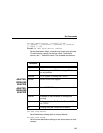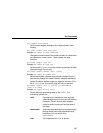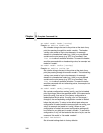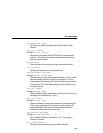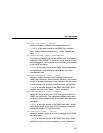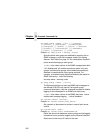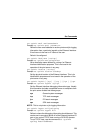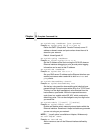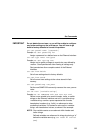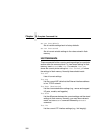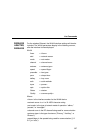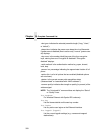
Chapter 16 Complete Command List
352
set snmp alerts <index> [-]all | [[-]warning]
[[-]offline] [[-]mediainput] [[-]mediaoutput]
[[-]mediapath] [[-]marker] [[-]cutter] [[-]barcode]
[[-]scanner] [[-]intervention] [[-]consumable]
[[-]label] [[-]powercart] [[-]rfid]
Example:
set snmp alerts 1 warning -cutter]
Specifies which alert groups are enabled for reporting via an
SNMP manager, e-mail alert message, and/or Unix syslog
daemon. See Table 8 on page 101 for a description of specific
printer events belonging to each group.
<index>
is the index number of the SNMP manager/alert table.
“-all” disables and “all” enables reporting of alerts in all alert
groups. Individual alert groups can be selectively enabled or
disabled via combinations of alert group switches. For
example, to enable warning alerts and disable cutter alerts for
SNMP table entry 1, enter the following:
set snmp alerts 1 warning -cutter
set snmp syslog <index> [-]active
The Ethernet Interface can also log SNMP alert messages to
the defined SYSLOG host (see the ‘set sysinfo syslog’
command description). Use this command to enable or disable
logging of alert messages for an SNMP alert table entry.
<index>
is the index number of the SNMP alert table. “active”
enables alert message logging, “-active” disables it.
set sysinfo contact [<string>]
Example:
set sysinfo contact Paul_Harris
Set a person or department to contact in case of print server
trouble.
set sysinfo email <email>
Example:
set sysinfo email JohnDoe@IBM.com
Define the user email address to receive printer and job logging
information from a particular logpath on the Ethernet Interface.
Email name is the host or IP name of the user.




